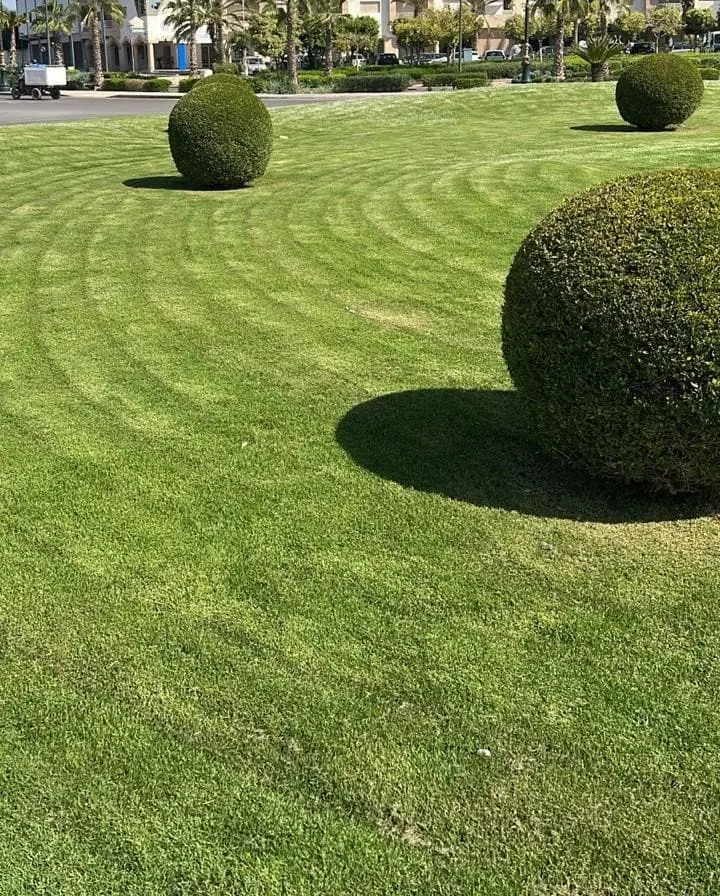Introduction – Mowing the lawn
A beautiful lawn doesn’t happen by chance. It demands care, attention, and most importantly — regular mowing. Many homeowners underestimate the importance of mowing correctly, leading to patchy, weak, or unhealthy lawns. In this complete guide, we’ll explore why mowing matters, the best practices for a healthy lawn, and how to properly operate your mower for flawless results.
Whether you’re a beginner or looking to perfect your technique, follow these professional tips to achieve a lush, vibrant lawn all year round.
Why Mowing the Lawn Is Important for a Healthy Garden !
Mowing the lawn regularly is essential for a vibrant, healthy yard.
Regular mowing isn’t just about keeping your yard looking tidy. It’s a critical part of your lawn’s health:
- Stimulates Growth: Cutting the grass encourages denser growth, making your lawn look fuller and healthier.
- Controls Weeds: A well-maintained lawn reduces the chances of weeds establishing themselves.
- Improves Root Development: Frequent mowing supports deeper, stronger roots, helping your grass survive drought and disease.
- Enhances Appearance: Regular cuts maintain a consistent height and a polished, professional look.
When and How Often Should You Mow?
Timing your mowing sessions is essential for lawn health:
- Spring and Summer: Mow once a week during peak growth seasons.
- Autumn: Mow less frequently as growth slows down.
- Winter: Avoid mowing unless the grass is still growing and conditions are mild.
Golden Rule: Never remove more than one-third of the grass height at a time. Cutting too short stresses the lawn and weakens its structure.
Proper mowing the lawn techniques can drastically improve the appearance of your garden.

Best Practices for Mowing the Lawn Correctly
Adjust the Cutting Height
- Cool-Season Grasses (like fescues, bluegrass): Keep between 2.5 to 4 inches.
- Warm-Season Grasses (like Bermuda, zoysia): Maintain between 1 to 3 inches.
Raise your mower blade during hot, dry spells to protect the roots from heat stress.
Sharpen Your Mower Blades
Dull blades tear the grass instead of cutting cleanly, leading to brown, frayed tips. Sharpen blades at least once or twice per mowing season.
Vary Your Mowing Pattern
Avoid mowing in the same direction every time. Changing the pattern prevents soil compaction and promotes more upright growth.
Leave the Clippings
Instead of bagging, leave short clippings on the lawn (“grasscycling”). They decompose quickly and return valuable nutrients to the soil.
How to Operate a Mower for Perfect Lawn Mowing
Mowing isn’t just about pushing the machine — it’s about doing it right:
1. Plan Your Route
Before you start, visually map out your mowing pattern. For rectangular lawns, mow in straight lines. For curved or complex shapes, start with a perimeter pass, then fill in the center.
2. Overlap Slightly
Overlap each pass by a few inches to ensure complete coverage without missed strips.
3. Maintain a Consistent Speed
Move steadily. Avoid rushing, which can leave uneven cuts, and don’t go too slowly, which can clog the mower.
4. Turn Carefully
Make wide, gentle turns instead of abrupt pivots. Tight turns can damage the grass, especially when the mower wheels scrape the soil.
5. Mow When Dry
Wet grass bends under the mower and clumps together, resulting in an uneven cut. Mow when the lawn is dry for the cleanest results.
6. Safety First
Always wear sturdy footwear, clear debris beforehand, and never pull a running mower backward unless absolutely necessary.
Common Lawn Mowing Mistakes to Avoid
- Cutting Too Short: Also called “scalping,” it stresses the grass and exposes it to weeds and diseases.
- Mowing With Dull Blades: Causes ragged, unhealthy grass blades.
- Mowing Wet Grass: Leads to clogged equipment and uneven mowing.
- Ignoring Mowing Patterns: Causes unsightly ruts and uneven growth.
Bonus Tips for Lawn Mowing Success
- Alternate the Direction Each Time: It keeps grass blades growing upright.
- Use the Right Mower: Reel mowers for fine lawns, rotary mowers for general lawns, and ride-on mowers for large spaces.
- Check Mower Tire Pressure: Uneven tires can cause an uneven mow.
- Edge and Trim After Mowing: For a sharp, manicured finish, tidy up lawn edges and borders after mowing.

Conclusion
Mastering the art of lawn mowing transforms a simple outdoor chore into a key ingredient of a thriving, gorgeous landscape. By following these expert techniques — from adjusting your mower height to perfecting your driving skills — you can ensure your lawn stays green, healthy, and inviting season after season.
Take the time to mow thoughtfully, and your lawn will reward you with effortless beauty year-round. Happy mowing! If you want to master mowing the lawn, follow these simple yet effective tips.
Looking for more tips? Check out our full guide on https://architectlandscapro.com/lawn-care-tips/
For more professional lawn care advice, you can also consult The Royal Horticultural Society’s Lawn Mowing Guide.


